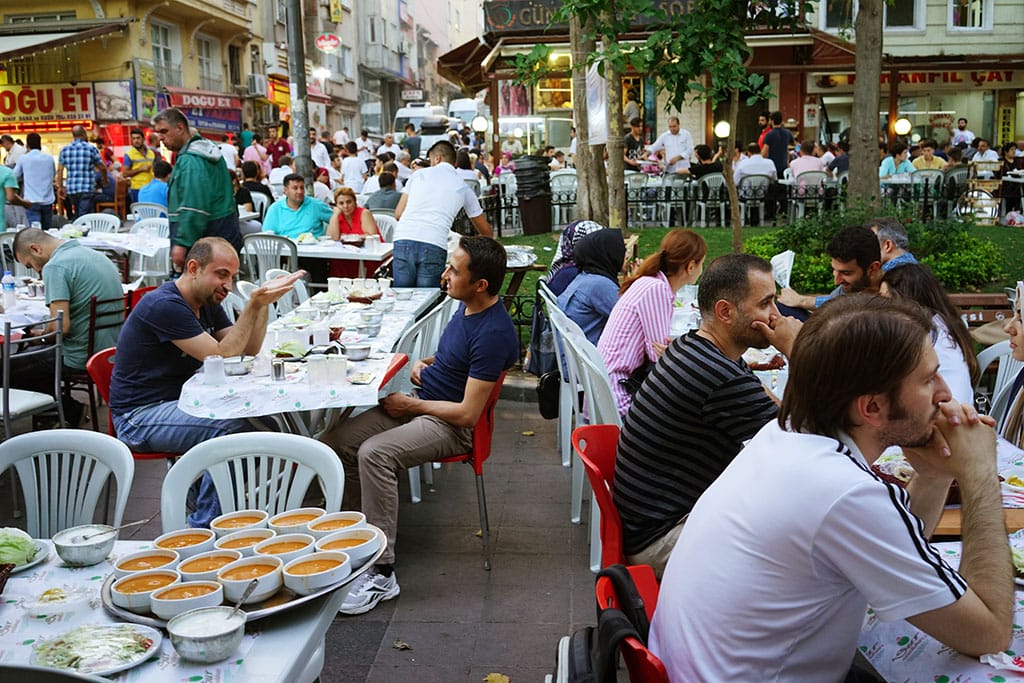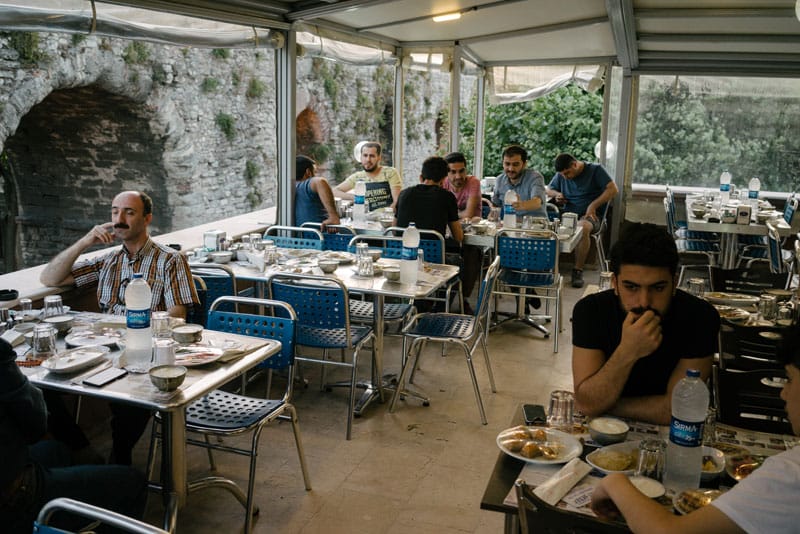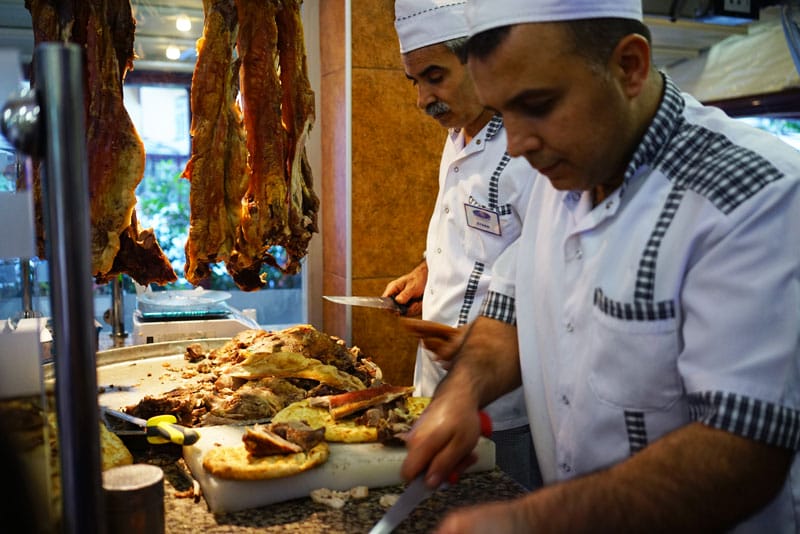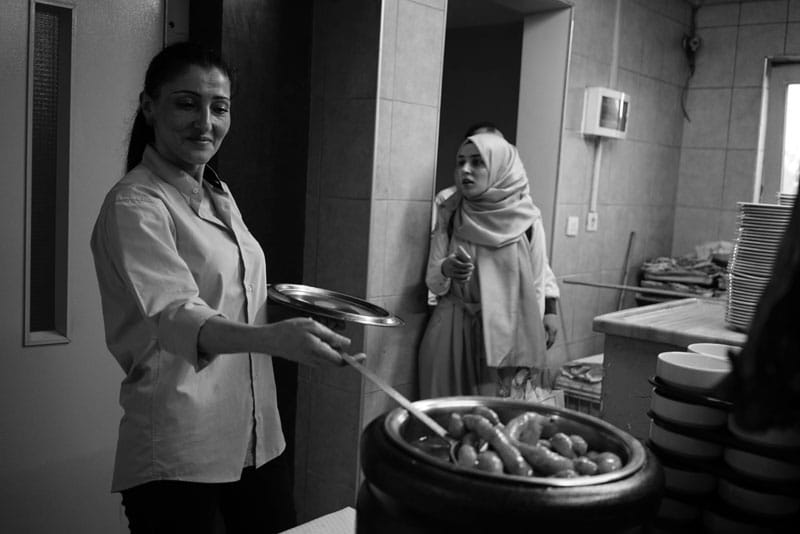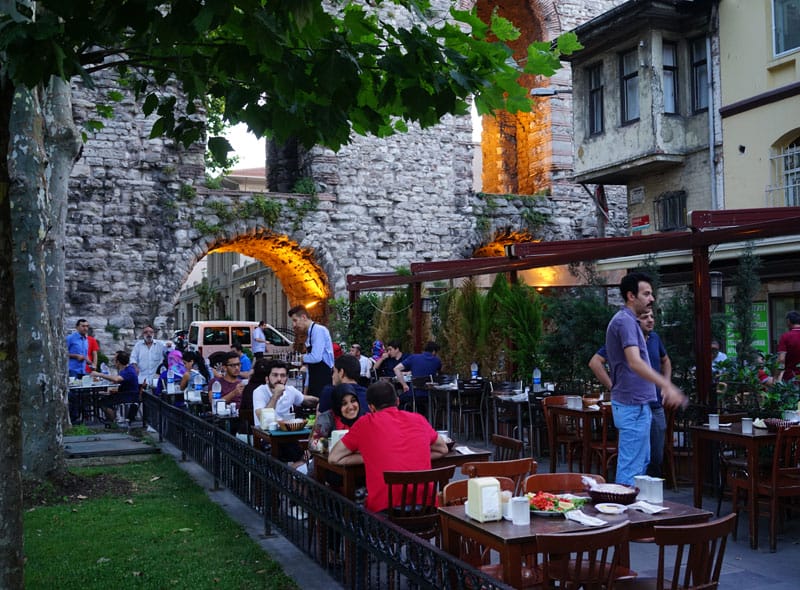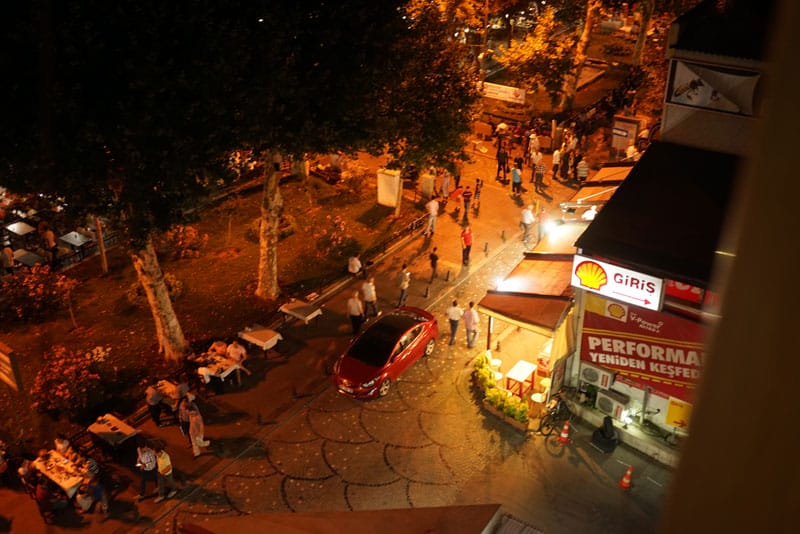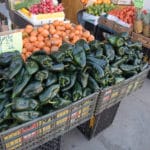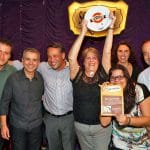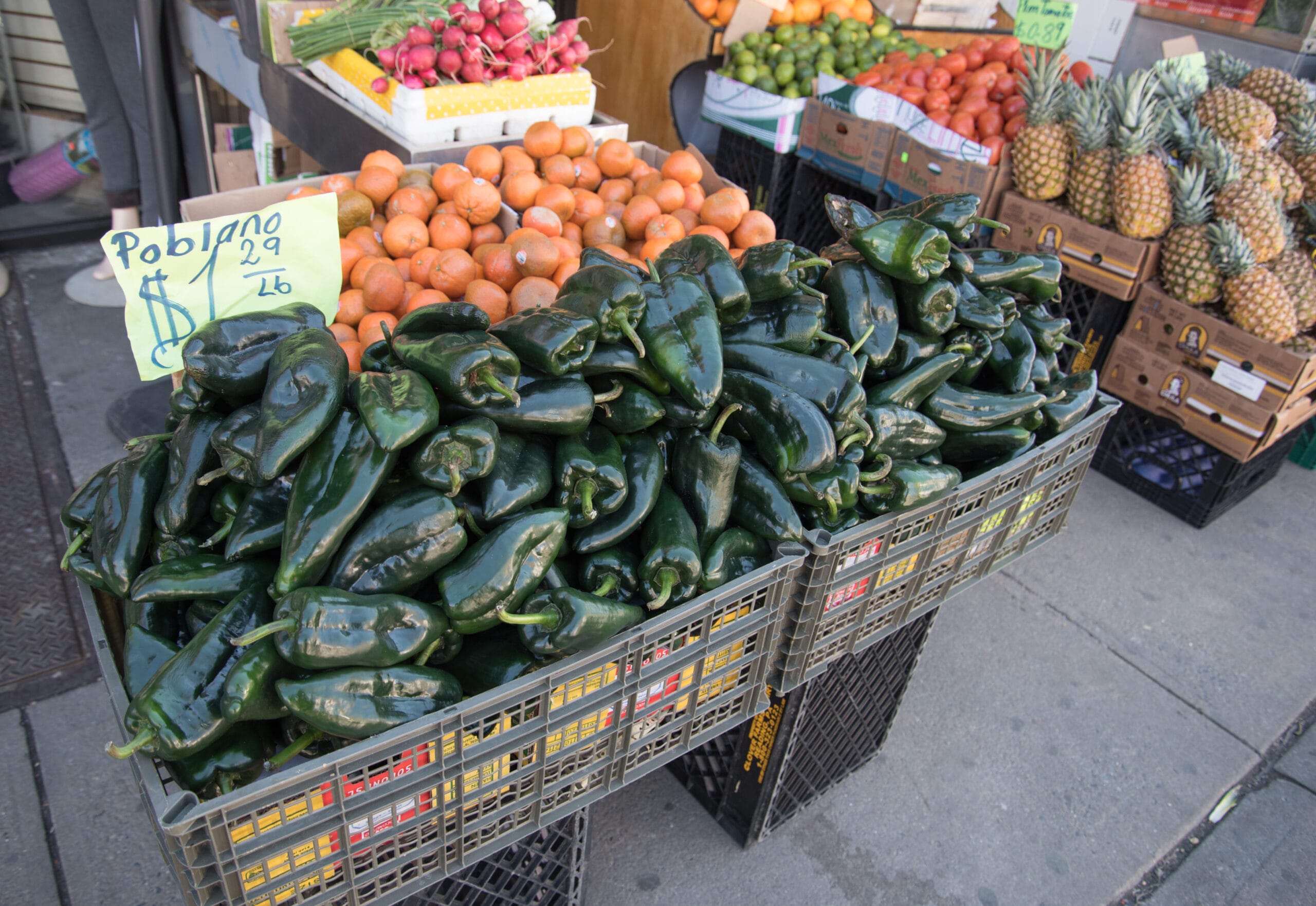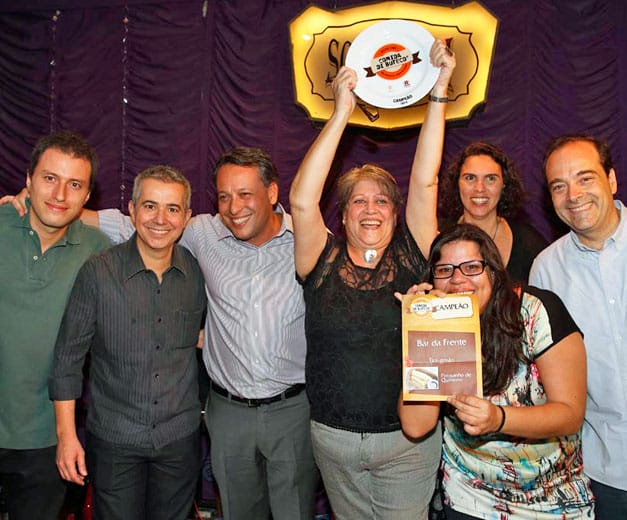Ramadan fasters in Istanbul may not love the endless daylight hours in summer nor the susuzluk (no water), but when the reward is a leisurely iftar under the trees on Kadınlar Pazarı, the pedestrianized market known as Little Siirt (named after the southeastern Turkish city where many of the local shop and restaurant owners hail from), it must surely seem worth it.
A February iftar would not be quite the same, at least not in Turkey. As we walked through the twilight to Siirt Şeref Büryan Kebap Salonu at the end of the square last Saturday, hundreds of fasters waited in front of cling-filmed plates of iceberg lettuce and ciǧ köfte (little croquettes traditionally made out of a mash of bulgur, spices and raw meat) for the Ramadan cannon to signal “breakfast” time. Some fed their children while they waited, while others kept their hands and minds busy with cell phones as a soft breeze wafted grill smoke through the arches of the Byzantine aqueduct of Valens that dominates the square.
Şeref Büryan feeds 450 customers every night during Ramadan, the month-long period of daily fasting which ends on Tuesday. Their famed büryan lamb kebab cooks for two hours on hooks lowered into a sealed pit, with only salt to draw out the flavors. Bones are removed from the meat and cooked separately to impart flavor to the meat. The result is succulent, and it is served on a round of lavaş; lamb on toast, Siirt-style. Perde pilav, a traditional wedding dish of chicken in a rice crust cooked in a tin pot, is also served, as well as a flat, Siirt version of içli köfte (cooked ground meat stuffed inside a bulgur shell). The owners, brothers Beşir and Levent, have another branch in Siirt and have served Martha Stewart, among others, their büryan.
At ten to nine, the mahyalar (letters in lights) strung up between the Suleymaniye Mosque minarets lit up, reminding us not to forget those who had nothing (Yoksulu unutma), the message underlined by the fireworks that erupted behind it. In case we had missed the cannon shot, the defiantly cheerful waiters announced iftar to each table. Our neighbors muttered a prayer as they ate a date – the traditional opening bite of an iftar meal – and drank a large glass of water, the first thing to pass their lips for 16 hours. Seagulls wheeled above our heads, their undercarriages lit a soft yellow by the city.
The waiters were still good-humored as we left the restaurant despite having fasted an extra couple of hours while serving us. We emerged on the square as the mosque next door filled up for evening prayers. On our way home, we had a sighting of Kınalı, a sheep with henna-colored wool who has become a local Istanbul legend for the strolls she takes around town with her eccentric owner, who bought her from a butcher several years ago. It was the perfect (if slightly bizarre) ending to a mutton-filled evening.
Editor’s note: As the holy month of Ramadan begins, we wanted to share this 2016 story about one of our favorite iftars in Istanbul.
Malika BrowneMonica Fritz
Published on June 07, 2018
Related stories
April 30, 2017
Queens | By Melanie Einzig
QueensWe spotted these beautiful Poblano chile peppers at a market on the route of our new culinary walk in Queens.
June 2, 2014
RioAnd the winner is... Okay, okay, it’s nothing like the Oscar ceremony. But everyone in attendance at Comida di Buteco 2014 – the most important popular gastronomy competition in Rio – did hold a collective breath moments before the winner was announced. When the hostess proclaimed Bar da Frente the victor, the Rio Scenarium, the…
December 1, 2022
Marseille | By Jenine Abboushi
MarseilleVoilà vé is a Marseillais interjection meaning “look here.” Look – and taste, Victor Million-Rousseau and his partner Alix Huguet might add. They are the owners of the Camas neighborhood’s organic wine bar Voilà Vé, which opened its doors just six months before the first Covid-19 lockdown and the ensuing rocketing upsurge in the organic…







































